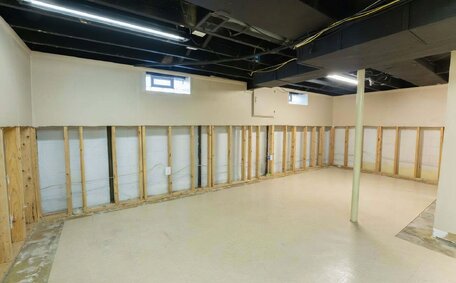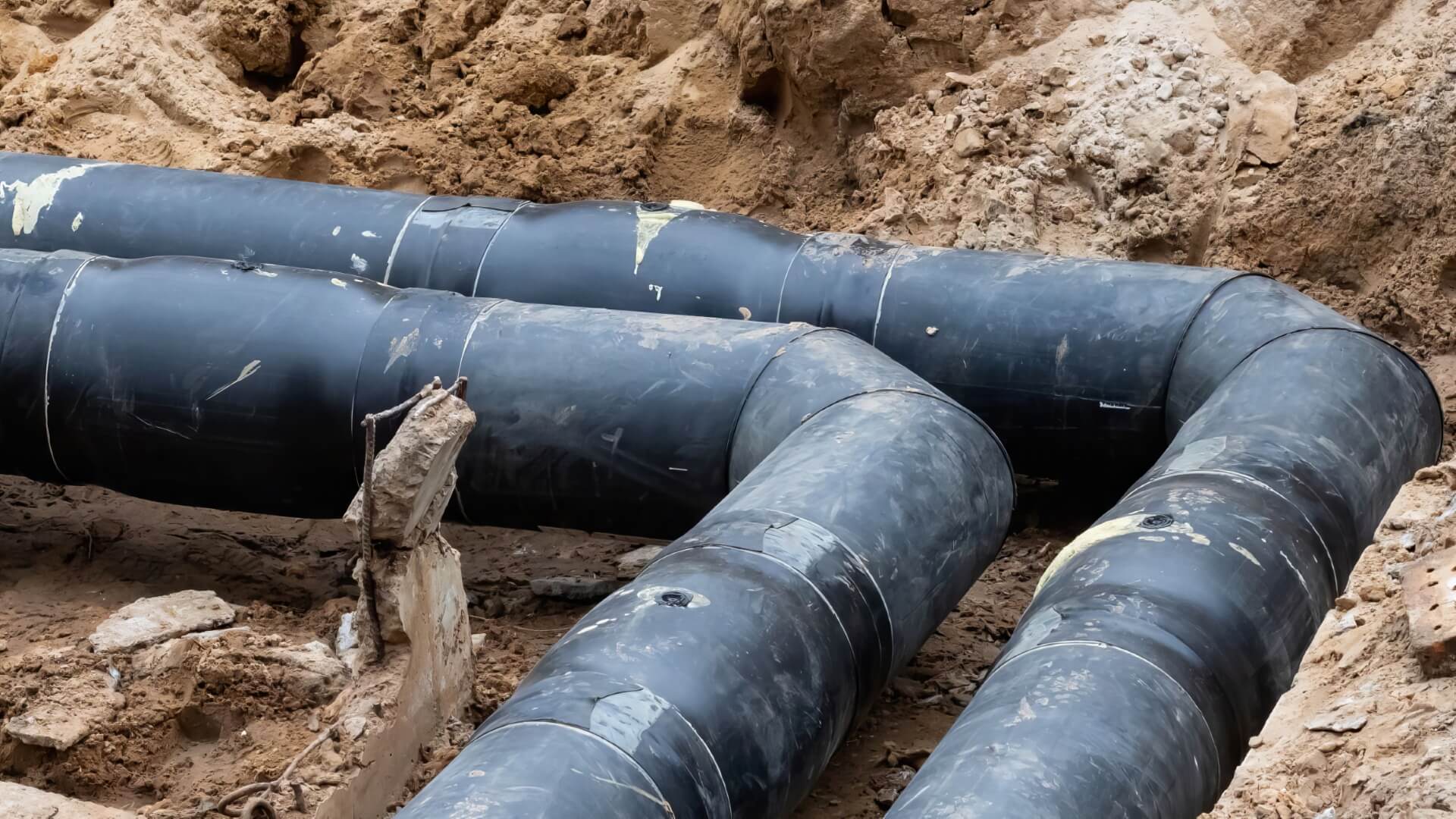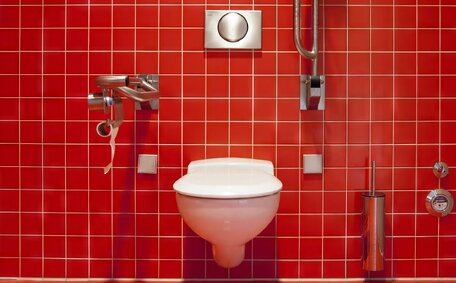Identifying pipes most vulnerable to freezing
Pipes located in unheated spaces such as attics, crawl spaces, and adjacent to garage doors are susceptible to freezing. Pipes adjacent to outside walls or within cabinets on these walls are highly susceptible to freezing. These areas have more exposure to cold outdoor temperatures that can drop below freezing, putting pipes at risk of freezing when the thermostat plummets.
Old worn pipe insulation may also leave pipes vulnerable.
Stay alert for pipes near drafts and increase the heat as necessary to reduce the risk of bursting.
Locating shut-off valves is crucial for quickly stopping the water flow if a pipe bursts. Observing temperatures in areas of your dwelling during chilling weather is smart to detect if a frozen pipe near areas your house typically stays warmer can be caught before it becomes an issue.
Insulating pipes properly before winter
Proper insulation of pipes in vulnerable areas is crucial to prevent freezing and potential bursting. Foam pipe insulation or heat tape are effective materials to prevent your pipes from freezing. Foam insulation, available in tubular sections, fits snugly around pipes, offering protection against cold drafts.
When selecting foam insulation for your water pipes in the crawl space, ensure your choice has a high R-value, one of the things can do to enhance insulating performance. Ensure you procure insulation that fits snugly around the pipe’s diameter to help prevent any exposure to the cold. Ensure all seams are well-sealed with adhesive to effectively prevent cold air ingress and enhance pipe safety.
When wondering what do to thaw frozen pipes due to cold weather in unheated areas like attics, consider heat tape an excellent solution. Heat tape wraps around pipes and gently warms them, ensuring the water pipe can resist freezing temperatures. Use UL-approved heat tape and install it according to manufacturer instructions, tightly wrapping pipes without gaps.
Insulating valves, elbows, and tees is also recommended to protect against icy temperatures. Check insulation for wear and re-wrap bare patches before winter.
Maintaining adequate heat in your home
Maintaining a steady warm airflow is vital to ensure that when water freezes in your home, the pipes are protected against it. Keeping your indoor temperature above 13°C during winter is essential to protect your pipes from freezing. This helps to prevent a pipe burst by keeping your pipes from freezing, maintaining them above the critical temperature.
Take several practical measures to maintain adequate warmth throughout your house:
- Set your thermostat to at least 13°C when absent and increase it to between 18-21°C while at home.
- Check that your thermostat batteries are in prime condition to confirm that areas of your home where water is likely to freeze remain safe.
- Run ceiling fans in a clockwise direction to redistribute warm air throughout the room, keeping cold air at bay.
- Keep interior doors open, including cabinet doors, allowing warmer air to circulate freely.
- It’s a good idea to seal any air leaks that let cold air into your abode near pipes. Use caulk or weatherstripping.
- Insulate your walls and attics for enhanced warmth containment so frozen pipes can be prevented.
- Embrace the sun’s warmth to help warm up your space through south-facing windows during the daytime.
Vigilantly monitoring temperatures ensures your home can be safeguarded, providing peace of mind that a frozen pipe can be caught before causing issues.
Allowing faucets to drip during cold snaps
Allowing a faucet to drip during extreme cold can reduce the risk of increased water pressure and burst pipe damage. Sustained subzero temperatures can lead to frozen water in the pipes, resulting in a pressure buildup that might provoke ruptures.
Allowing faucets to drip slightly can alleviate pressure and help if you discover a frozen pipe during a cold snap. Though it seems trivial, this prudent tactic eases tension that could cause pipes to fail, making it far less likely.
Focus on taps near uninsulated areas like basements, crawl spaces, or sections of supply pipes in cold zones.
If you’re away from home, shut off the water supply and consult a plumber to drain external pipes or hose bibs. For sinks near exterior walls, open the vanity door to allow heat circulation and permit cold water taps to drip, alongside warm water, gradually.
Use this proven preventive measure to shield your pipes from extreme temperatures. Allowing faucets to drip strategically during severe cold can greatly minimize the risk of pipes bursting.
Sealing air leaks around pipes
Sealing air leaks around pipes is crucial to prevent plummeting temperatures that can lead to freezing. Cold drafts can cause pipes to drop in temperature, putting them at risk of freezing up when outdoor conditions plummet below freezing.
Inspect around pipes carefully, especially near draughty windows and doors. Check walls, floors, and ceilings for gaps allowing cold air contact. Common trouble spots include:
- Around pipe penetrations through walls, floors, ceilings
- Window frames
- Door frames and thresholds
- Openings for wires, cables, vents
- Attic hatches
- Baseboards
Use caulk or foam sealant to seal gaps, which helps shield your pipes from drafts that could cause freezing. You do use weather stripping to effectively seal moveable joints around doors and windows against the chill. Invest time now sealing leaks, which can protect against the bitter cold from accessing pipes when it matters most.
Insulating boxes around valves in unheated areas is also a wise preventative step. Eliminate drafts around pipes to maintain warmer temperatures that keep water flow safely maintained.
Thawing frozen pipes gradually and safely
If you find a frozen area, shut off the water to prevent ruptures before slowly applying methods to thaw the pipe. Avoid using an open flame or blowtorch, as they can severely damage water pipes. Instead, utilise devices like a hairdryer, space heater, or hot water bottles that help thaw pipes gently but remember to never use open flames.
Turning off the water valve is vital to prevent potential bursts when thawing begins, reducing the risk of ruptures from pressure buildup. Also, turn on your taps in proximity to ensure the pressure release is done right, which is a cornerstone of home safety during winter.
Warm the pipe near frozen sections gradually to thaw them using a hairdryer on its lowest setting or a space heater several feet away, moving it closer as ice melts. Applying hot water bottles also slowly transfers heat. Avoid introducing excessive heat into your plastic pipes with hairdryers.
Check different areas of the pipe to preserve your property’s plumbing until water starts flowing.
Failing to cautiously thaw your plumbing can permit new ice obstructions to take shape, increasing the risk of water damage.
Learn more about measures you can take to prevent pipe disasters and gain insights from a licensed plumber on professional frozen pipe repair at St Peters Plumbing. Reach out any time of day by calling 1300 349 338 to schedule frozen pipe thawing.
Preparing for and dealing with burst pipes
Dealing with burst pipes starts with being prepared, including submitting your home to a plumbing check-up before the onset of cold weather.
To mitigate pipe mishaps, start by locating the main water shut-off valve for prompt action in emergencies. Create a map showing valve locations and turning instructions; place it inside your kitchen cupboard with emergency contact details for St Peters Plumbing.
If you return home to find broken pipes spurting water, turn off the main valve right away. Also switch off power to your boiler, water tanks, water heaters or furnace humidifiers. Call your insurance company and 1300 349 338 so our technicians can stop by urgently to handle repairs.
Before our arrival, absorb excess water with towels, ensuring compliance with your insurance policy terms. Prevent mould growth by drying out affected areas.
Put pans under any drips and create holes to ensure water drains securely. Never touch broken pipes or exposed wires while standing in water.
Our 24/7 emergency service is available for frozen or burst pipe repairs and water removal. Have our number saved ahead of disasters for rapid response times minimising disruption and property damage.
Preventing future pipe freezing issues
Begin preventing frozen pipes by checking exposed water pipes for insulation gaps or deterioration and repairing any identified issues.
Consider re-routing vulnerable pipes from outside walls to inside ones to lessen exposure to the cold. Pipe sleeves, heat cables, or heat tape can also be installed as an added freeze preventative measure.
Consistently keep cabinet doors open beneath sinks to facilitate air flow and maintain warm pipes. Insulate outdoor spigots with protective covers. Protect them, particularly your heating systems, including thermostats set to at least 55°F, and open interior doors to support better heat distribution.
For guidance tailored to your home and environmental factors, consult St Peters Plumbing.
Reach out for expert advice via email, appointment, or phone call on 1300 349 338 to have one of our licenced technicians provide a comprehensive plumbing assessment identifying vulnerabilities and solutions to keep pipes freeze-free.






